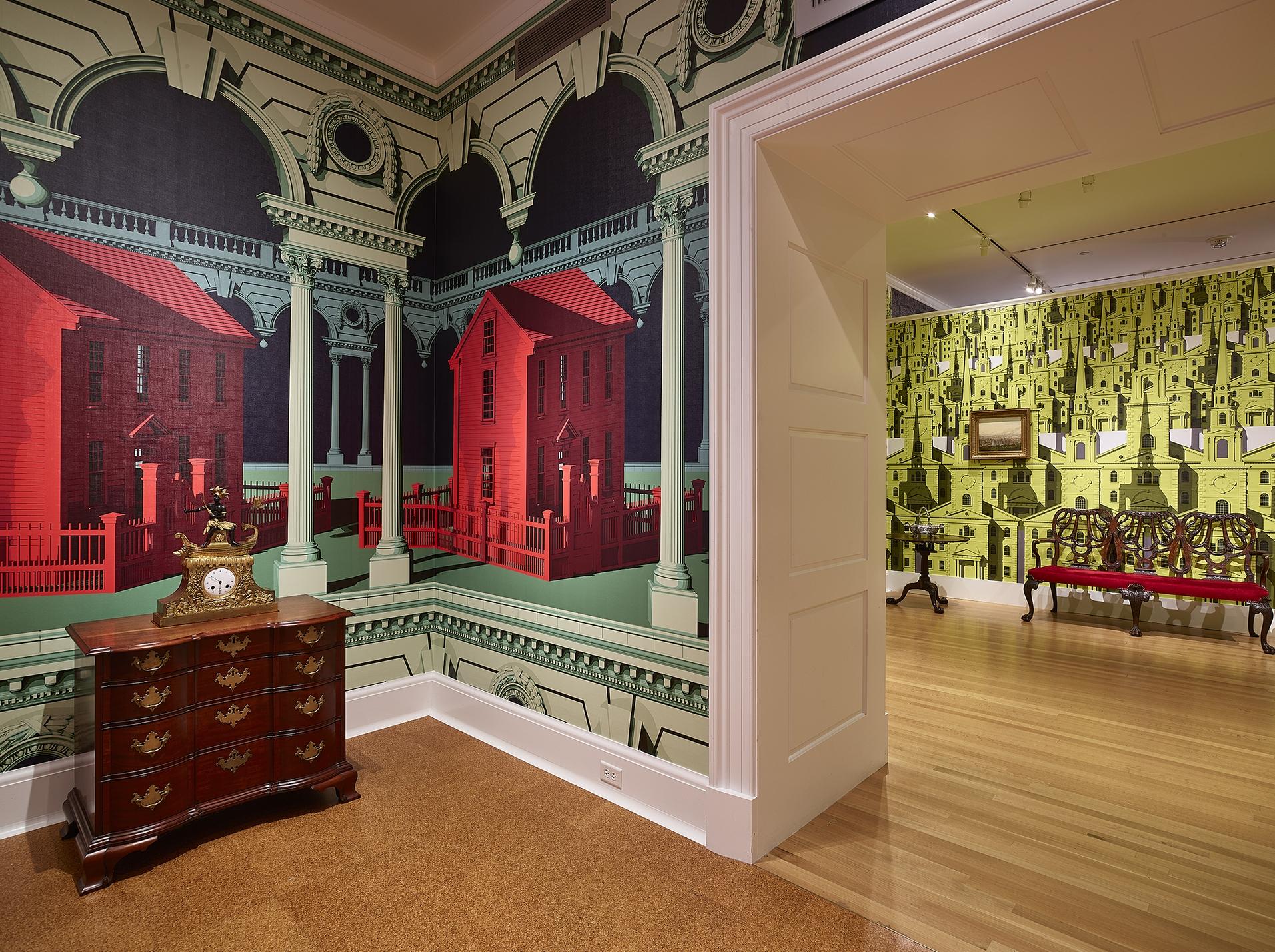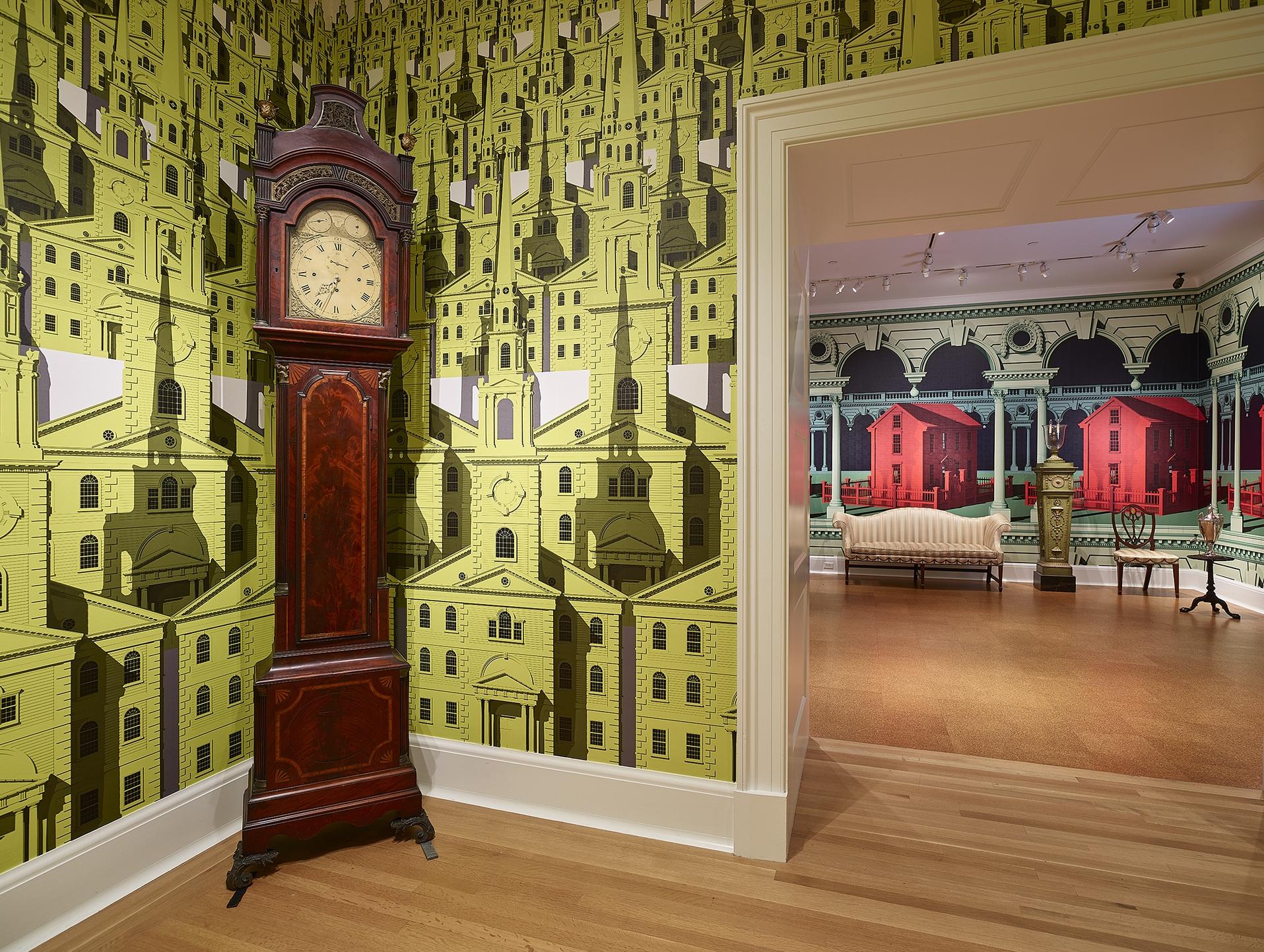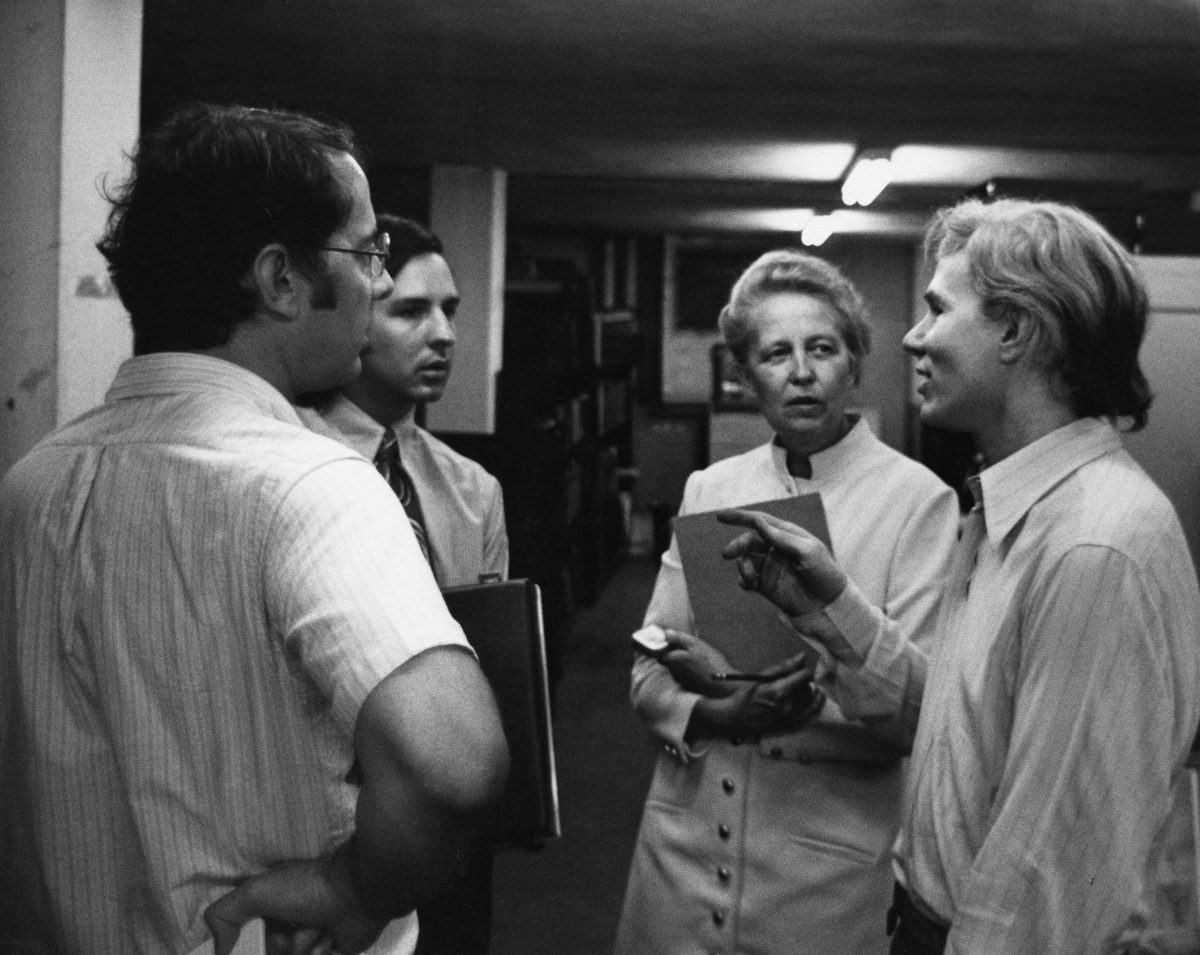“Raid the Icebox I with Andy Warhol” opened in Houston in October 1969 before making its way to the RISD Museum the following April. Providence students picketed, objecting to Warhol’s frivolity during a time of Vietnam War protests, and the show met with a quiet reception.


Today, nine artists and designers have drawn on the museum’s collections to create exhibitions honoring the show’s anniversary. “Raid the Icebox Now” opened recently with some individual projects rolling out over the following months.
Convening during the summer of 2018, artists followed in Warhol’s footsteps and waded into the museum’s storage of more than 100,000 objects — more than double the number in the collections when Warhol made his selections. “You encounter really interesting things in there that you would not expect,” said Pablo Helguera, who was invited to work with the museum’s Latin American collections. “It’s almost like doing archaeology.”
The assignment was never to mimic Warhol’s historic show, Helguera said. But, like Warhol, the artists will take on a curatorial role and delve into the museum’s storage to build their own exhibitions.
“People often kind of forget that it actually happened in Providence,” said RISD Museum Director John Smith. “Fifty years ago, when a museum invited an artist in, it was a real rarity.” After Warhol’s landmark exhibition, artists have acted as curators far more often in museums around the world.
The projects use mediums ranging from sound to wallpaper to paintings. They are months and years in the making. Some will just take inspiration from the museum’s collections, while others will pull pieces out of storage and into the galleries — like Warhol, the contemporary artists “gathered things that were gathering dust,” said Beth Katleman, a Brooklyn-based sculptor on the project.
—
Wearing chartreuse tights beneath brown suede pants and complaining of an ingrown toenail, Warhol arrived in Providence for the first of his RISD Museum visits with an entourage in tow.
“The RISD Museum was a very sleepy place” then, said Sarah Ganz Blythe, deputy director of the RISD Museum, in a preview of the 2019 exhibition. Students didn’t visit often. The collection of 45,000 objects was going to waste.
“Because we have so much that is exciting, beautiful, informative, problematic, teasing to our knowledge, and because no one can get at it, no one excepting a small and very overworked staff, sentiments in storage range from wild exhilaration to black despair,” Daniel Robbins, director of the RISD Museum in 1969, wrote in the catalog for “Raid the Icebox.” An artist-curated show would draw attention and let some of the collections see the light of day again.
Robbins presented Warhol with a cabinet of shoes when they first entered the RISD storerooms. Fascinated, Warhol decided to take them all. ”[N]o one quite expected that he would order the whole cabinet for inclusion in his exhibition!” Robbins observed in the catalog. There were 194 pairs displayed: clogs, mules, ankle boots, oxfords, pumps and more. Slippers from England and America, India and France. Sandals from the Philippines and babouches from North Africa.
Warhol’s choices were eccentric, emphasizing his interests ranging from wallpaper to indigenous pottery to classic paintings. He chose hatboxes, but no hats. He selected works by Velázquez, Rousseau, Sargent, and Cézanne. An anonymous watercolor featuring a watermelon was included, as well as a Rodin sculpture: “Man with the Broken Nose.”
He opted to feature 17 chairs, picking a row that had been retained only in case spare parts were needed. He added a wooden crucifix to the mix. Unfortunately, the dozen harpsichords he found were too delicate to be moved, David Bourdon reported for “Art News.”
Whole shelves and cabinets were transported from the storerooms for the show. Warhol often requested that objects be displayed as he found them. “Just like that,” he asked repeatedly, according to Bourdon — he wanted the paintings as well as the sandbags on the floor nearby.
The exhibition was orchestrated to imitate the RISD storerooms — the gallery for Warhol’s exhibition was covered in brown paper, and he designed the show to display all kinds of works arranged together.
—
“Raid the Icebox Now” will highlight similarly diverse works: Providence-based artist Sebastian Ruth composed his own music to accompany 24-hour footage of lights against Providence smokestacks projected in one of the same galleries Warhol filled. Like Warhol, Ruth will also make his own selection of chairs, and the gallery will again be decked out in brown paper.
Other exhibits will reflect more subtle parallels to Warhol’s work. Triple Canopy, a Brooklyn-based digital publishing collective, will be investigating themes of consumption and nationality in America through multimedia pieces, while artist Pablo Bronstein will create wallpapers and fabrics showing Rhode Island buildings like the State House.
Still other projects have no obvious ties to the original “Raid the Icebox” at all. In another space Warhol used, artist Adam Pendleton will trace depictions of blackness through different historical contexts by arranging works from the collection alongside his own pieces.
The wide range of unconnected exhibits planned is almost Warholian in its bold recombination. Spotting pieces he liked in 1969, Warhol would announce, “I’ll take them!” Or in the case of the ginkgo in the museum courtyard, “I want that tree.” Sometimes he would indicate his selections with just a nod, or try to convince others to choose for him, Bourdon added.
Robbins felt that “a weird poetry results” from the curious conglomeration of artifacts, but most responses were not as positive. “Raid the Icebox” opened at Rice University in October 1969 — directed by Jean and Dominique de Menil, Houston-based arts patrons who conceptualized the exhibit with Robbins — and made a stop in New Orleans before facing student picketing upon arrival in Providence the following April.
Amid Vietnam War protests and the Civil Rights movement, Warhol was often considered divorced from politics and even frivolous, Smith said. Donors and curators were not happy with his offhand treatment of the collections.
“Once the show was over, it seemed almost that they just wanted to erase the fact that it ever happened at the RISD Museum,” Smith added. But the museum has worked to engage artists in curatorial work in recent years, following the example of Warhol’s artist-curated exhibit.
Artists were invited to work with specific parts of the collection for “Raid the Icebox Now,” said Dominic Molon, a curator at the RISD Museum. The artists will be “using our collection as a source of inspiration or a source of opposition, if you will, as something to work with or against,” Smith said.
Nicole Eisenman is creating a gay nightclub scene within the museum’s galleries, complete with dance music and disco lighting, Molon said. Concentrating on the politics of who was represented in historic portraiture, the walls of her nightclub will display formal and antiquated paintings of those “who would perhaps feel most uncomfortable in that space,” Molon said.
Helguera will also compose immersive scenes, building a series of period rooms that will showcase art in familiar and homey environments. Many were built in response to conversations with artists or their kin, including multimedia artist Liliana Porter and photographer Milagros de la Torre. “Artworks are like people,” Helguera said. “It’s very hard to understand someone if you don’t know where they came from. ”
Helguera has been working on his exhibition for about two years, he said. Warhol constructed his exhibition in one season.
Warhol’s casual and irreverent artistic methods went against the grain of the RISD Museum’s mission, which has always elevated the handmade and trained artists in craftwork.
“Was he doing it as a Marxist middle finger to hierarchies and curators as these tastemakers?” Molon wondered. “Was he kind of just bored? Was it part of his hoarding mentality? Was there a certain democratic kind of an impulse?”
The upcoming exhibits do not seek to answer any of these questions. Without expectations that Warhol inspire their work, the artists were free to shape their own exhibitions. “Interestingly enough, everyone’s kind of gone a bit off script,” Molon added. The invitations let artists try something new.
Katleman created her first 360-degree environment: a monochrome room connecting the RISD Museum to period rooms that house objects collected and donated by Charles Pendleton. The hundreds of objects range from ship’s wheels to dice to Campbell’s soup cans that nod to Warhol’s work. Her elaborate porcelain scene will reflect Pendleton’s life and gambling habit, with paradise depicted on one side and a bone-scattered shipwreck on the other.
“Artists have a whole lot of license that curators don’t have about embellishing,” Katleman said. “It’s kind of playful and very ornate and very over the top.”
Opening the museum’s collections to artists creates an opportunity to question the politics and narratives they present, Blythe said. The museum is making itself vulnerable so it can listen better. The show will “poke enough holes” that the constructed nature of the galleries will become more obvious, she added.
Each exhibit will use Warhol’s legacy to add context and raise questions. Parts of Simone Leigh’s installation will be interspersed throughout the pieces in the museum’s galleries focused on ancient periods — her ceramic figures, fired multiple times to add new dimensions in their surface textures, will remain anonymous and timeless. Paul Scott will depict landscapes of America in the style of blue-and-white printed dishes that so many museums keep hidden in storage. But his scenes will show the deleterious effects of climate change and the persistence of racism, among other elements of today’s United States.
“We really want to demonstrate the fullest breadth of ways in which museums can be a home for artists,” Smith said. “Hopefully, unlike the ‘Raid the Icebox’ 50 years ago, there will be something immediate that we can embrace.”

